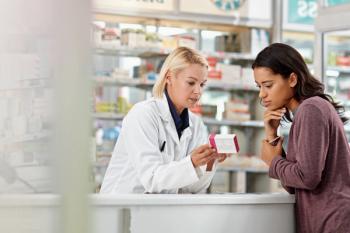
Medication safety calls for pharmacist involvement
A growing body of data supports greater pharmacist involvement in medication safety, said speaker Deb Saine at a recent Pharmacy OneSource webinar.
Key Points
Pharmacists can and should play a key role in medication safety.
"Medication safety is the essence of what we do," said Deb Saine, MS, RPh, medication safety manager, Winchester Medical Center/Valley Health, Winchester, Va. "We have to be very action-oriented in promoting practices to improve medication safety."
Adding clinical pharmacists to pediatric units has boosted error reports 6-fold and reduced severity by 46%. Using pharmacists for medication reconciliation at admission has produced a 98% drop in related adverse events. Another study found that discharge counseling by pharmacists cut preventable post-discharge adverse events from 10% to 1%.
Pharmacists can improve medication safety at several points in the process.
"Any technology used in the medication management system is where we should be at the table," Saine said. "Bar-coding, electronic prescribing, electronic medication-administration record systems, infusion pumps, electronic medical records, patient education, interoperability, the list goes on. Pharmacists should have a leadership role in planning, selection, system design, development, implementation, and maintenance. The goal is to ensure that technology supports safe medication use."
Saine views medication safety as a pyramid. A culture of safety lies at the base, an institutional culture that encourages communication and values safety. Her SAFETY-based team approach: Stop to assess a situation, Ask questions, Fix the problem or follow up, Evaluate results, Talk to the team, and think of safety as Your job.
The next level of the pyramid is information, identifying risk points in the medication system, and focusing efforts to minimize risks. Information includes external sources such as the Institute for Safe Medication Practices, the Joint Commission, and medication safety literature. Internal sources include adverse event reports and near misses, technical data, and staff reports or observations. Guidelines from the American Society of Health-System Pharmacists and the Joint Commission can help guide the process.
The next level of the pyramid is influencing practice patterns outside pharmacy. That means working with pharmacy and therapeutics committees, hospital-wide safety groups, performance improvement, sentinel events and root cause analysis, accreditation reviews, clinical initiatives, technology committees, and more.
"A lot goes on beyond the 4 walls of the pharmacy," Saine said. "We don't have control over those other areas, so we have to exert our influence to affect practice. You need to collaborate to improve safety."
That means working with every department that uses medications, not just medical and nursing teams. "Work with them to understand their needs and perspectives. The farther upstream you can act, the more patients you can protect from harm," Saine said.
Newsletter
Pharmacy practice is always changing. Stay ahead of the curve with the Drug Topics newsletter and get the latest drug information, industry trends, and patient care tips.















































































































